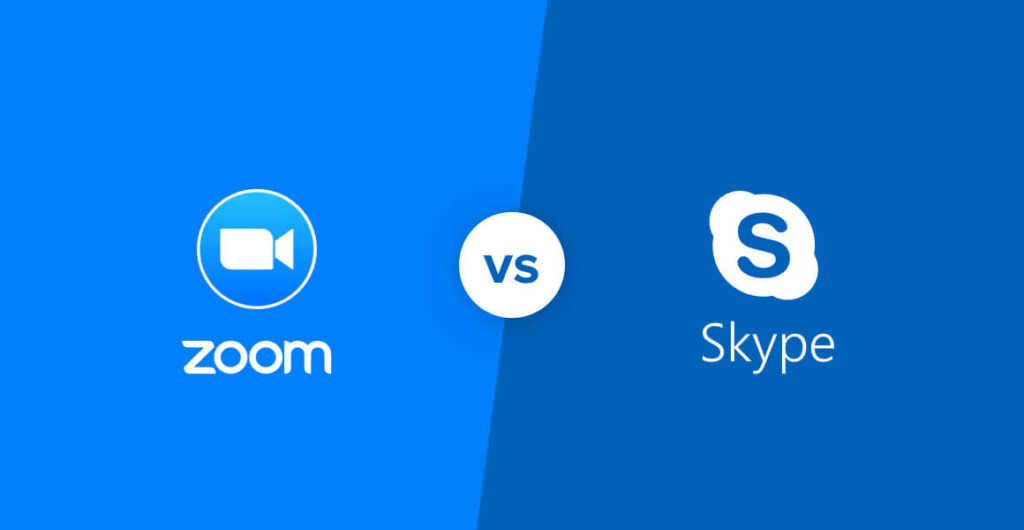Table of Contents
What’s the Difference between Skype Vs Zoom?
If you’re deciding between Skype and Zoom for your business needs, it’s important to understand how they compare. Both services are great for making calls, but their features are different enough to warrant a different recommendation.
Below we’ll cover sound quality, meeting caps, and privacy concerns. Both services are highly recommended for international calls, but there are some points to keep in mind when choosing between the two. We hope this comparison helps you make an informed decision!
Comparing Skype vs Zoom:
When it comes to video chat, you’ve probably heard of Skype and Zoom. Both services have been around since 2003, but only one is truly popular. Zoom is owned by Microsoft, while Skype is free and comes with a variety of features. Both have video calling, text-based instant messenger, and the ability to connect to Xbox and Alexa.
Zoom also supports webinars. If you’re looking for a video conferencing solution for your business, Zoom is the way to go. Regardless of the size of your business, you’ll probably want to use both of these services in your daily work. Each offers unique features, but they share a few core features that set them apart.
Listed below are some of the most notable differences between the two. Whichever one you choose, you’ll find your favorite feature here. In terms of integrations, Zoom is the clear winner. Both have desktop applications for Windows, Mac, and Linux, as well as browser extensions for Firefox and Chrome. Both also support email management, and both can link with your office phones.

Sound Quality:
A good VOIP application is essential for business meetings, so Skype vs Zoom sound quality is an important issue to consider when choosing between the two. While both applications offer a similar quality, some differences exist. For example, Zoom has better sound quality than Skype.
In addition, it uses a lot of bandwidth, so your audio quality may be affected by other factors. Fortunately, both apps offer some basic audio settings to help you improve your audio quality. Depending on the plan you choose, the audio quality from Skype and Zoom is important. Skype does not automatically activate 1080p resolutions, so you may need to upgrade your team’s settings or video quality to get this option.
If you’re looking to make sure the audio quality is high enough, choose Zoom, which offers excellent quality. But don’t forget that you should also keep in mind that both services require a decent internet connection and a good microphone to function properly.
Meeting Cap:
When comparing the features of Skype and Zoom, many people will wonder how to decide which service to use. The two video conferencing services offer similar features, such as screen sharing, recording, and file sharing. However, Zoom is more comprehensive, and it offers features like virtual hand-raising.
It is compatible with most operating systems and is available for both Windows and Mac users. Users can also call into meetings using Skype’s phone feature. Both Skype and Zoom allow video meetings without requiring sign-up or downloading the app.
If you want to create an instant meeting, you can generate a link to invite anyone to join. In addition to meeting organizers, participants can enjoy the full features of both services. However, meeting participants should keep this in mind before inviting everyone to the meeting. For this reason, Skype is a better choice than Zoom for business-to-business meetings.
Privacy Concerns:
If you’re looking to start a videoconference, you’ll want to look at the privacy and security concerns associated with each service. The US Government uses Advanced Encryption Standard (AES) to protect sensitive information. Skype uses AES and Rijndael to ensure the privacy of its users. While both products have strong 256-bit encryption, you should consider privacy concerns when using video conferencing services.
Companies that build the platforms can use this information to target advertisements and research. You can also be concerned about the privacy of your meeting, as the company can share information about you with businesses or the public. Here are some tips to help you protect your privacy.
Conclusion:
While both programs have privacy concerns, their privacy policies are not consistent. For example, Zoom can combine data from various sources and can tap into videos to analyze facial expressions. Users have discovered that their private conversations were not entirely private.
As a result, it is important to set up your meeting link and passwords carefully. Moreover, you must be sure that your conversations are private and are not accessible to other users.








